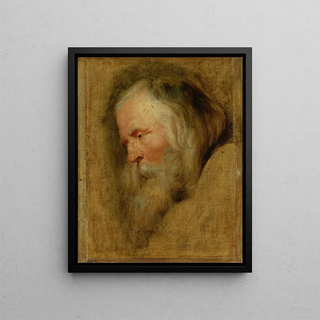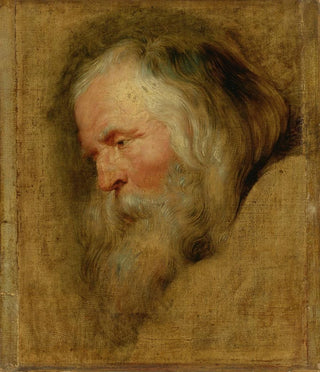Art print | Study of the head of Caspar, the oldest mage - School of Peter Paul Rubens


View from behind

Frame (optional)
Reproduction of "Study of the Head of Caspar the Oldest Mage" - School of Peter Paul Rubens – Captivating Introduction
The artwork titled "Study of the Head of Caspar the Oldest Mage" proves to be a true gem of Baroque art, showcasing the virtuosity of the School of Peter Paul Rubens. This painting, depicting one of the three Wise Men, is part of an artistic tradition where spirituality and humanity intertwine. Rubens, an undisputed master of the Baroque movement, manages to capture the very essence of wisdom and nobility through Caspar's face. The meticulous details of the expression, the nuances of light and shadow, as well as the psychological depth conveyed by this portrait make it a fascinating work—both intimate and universal. By contemplating this art print, the viewer is invited to immerse themselves in a universe where the sacred and the profane meet.
Style and uniqueness of the work
Rubens' work is distinguished by its flamboyant style and its ability to convey powerful emotions. In "Study of the Head of Caspar the Oldest Mage," the painter uses a palette of rich and vibrant colors, creating an atmosphere that is both solemn and mysterious. The features of Caspar's face are delicately modeled, revealing great expressiveness that testifies to the humanity of the character. The play of light accentuates the contours of the face, highlighting the details of wrinkles and shadows, which grants unparalleled depth to this study. Every brushstroke seems charged with meaning, as if Rubens aimed to immortalize not only Caspar's appearance but also his soul. This work is a perfect example of how art can transcend time and space, inviting the viewer to reflect on the nature of wisdom and knowledge.
The artist and his influence
Peter Paul Rubens, an emblematic figure of Flemish Baroque, knew how to mark his era with his bold style and masterful technique. Born in 1577, he was trained in the traditions of the Renaissance but quickly developed an artistic language that was uniquely his, combining movement, color, and emotion. Rubens not only

Matte finish

View from behind

Frame (optional)
Reproduction of "Study of the Head of Caspar the Oldest Mage" - School of Peter Paul Rubens – Captivating Introduction
The artwork titled "Study of the Head of Caspar the Oldest Mage" proves to be a true gem of Baroque art, showcasing the virtuosity of the School of Peter Paul Rubens. This painting, depicting one of the three Wise Men, is part of an artistic tradition where spirituality and humanity intertwine. Rubens, an undisputed master of the Baroque movement, manages to capture the very essence of wisdom and nobility through Caspar's face. The meticulous details of the expression, the nuances of light and shadow, as well as the psychological depth conveyed by this portrait make it a fascinating work—both intimate and universal. By contemplating this art print, the viewer is invited to immerse themselves in a universe where the sacred and the profane meet.
Style and uniqueness of the work
Rubens' work is distinguished by its flamboyant style and its ability to convey powerful emotions. In "Study of the Head of Caspar the Oldest Mage," the painter uses a palette of rich and vibrant colors, creating an atmosphere that is both solemn and mysterious. The features of Caspar's face are delicately modeled, revealing great expressiveness that testifies to the humanity of the character. The play of light accentuates the contours of the face, highlighting the details of wrinkles and shadows, which grants unparalleled depth to this study. Every brushstroke seems charged with meaning, as if Rubens aimed to immortalize not only Caspar's appearance but also his soul. This work is a perfect example of how art can transcend time and space, inviting the viewer to reflect on the nature of wisdom and knowledge.
The artist and his influence
Peter Paul Rubens, an emblematic figure of Flemish Baroque, knew how to mark his era with his bold style and masterful technique. Born in 1577, he was trained in the traditions of the Renaissance but quickly developed an artistic language that was uniquely his, combining movement, color, and emotion. Rubens not only






